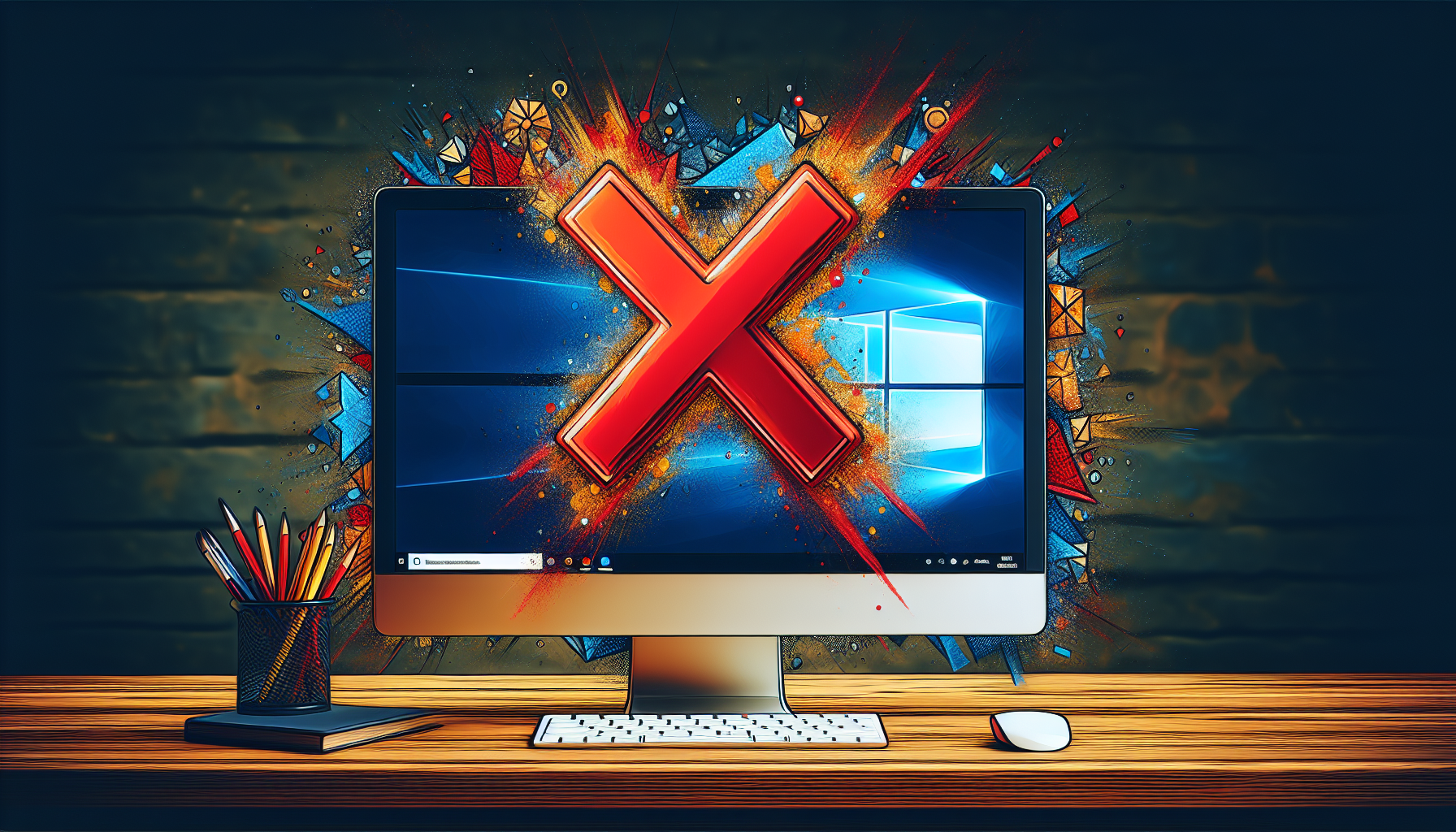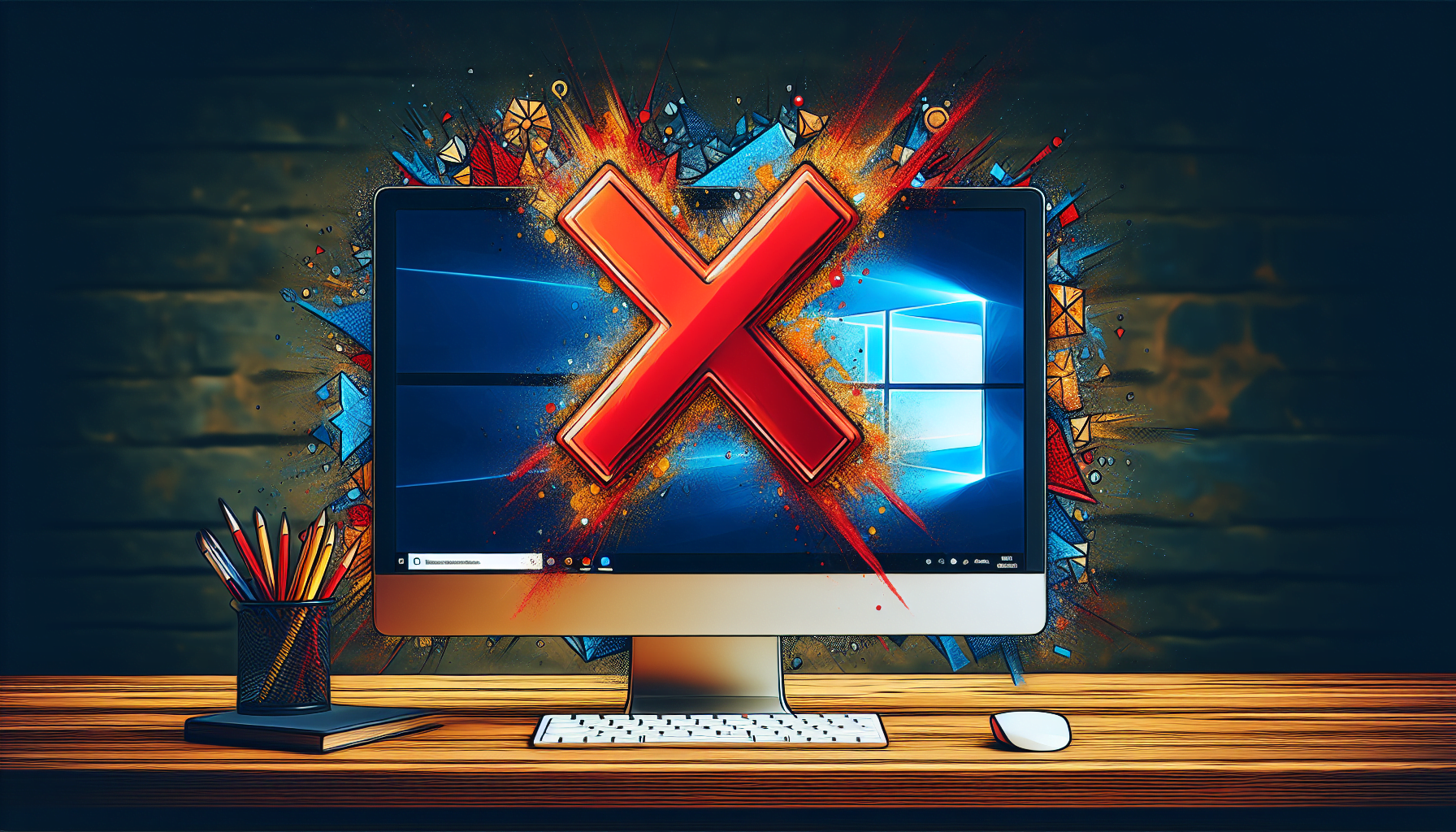Contents
- 1 Windows 10 Updates: Staying Up-to-Date
- 2 Types of Windows 10 Updates
- 3 Frequency of Updates
- 4 Benefits of Staying Up-to-Date
- 5 Challenges and Considerations
- 6 How to Stop Windows 10 Updates
- 7 How do I stop Windows 10 from automatically updating?
- 8 The Risks of Disabling Windows 10 Updates
- 9 Troubleshooting Tips
- 10 Conclusion
- 11 In Conclusion: Finding a Balance for Windows 10 Updates
- 12 Explore Windows 10 Guides and Troubleshooting Resources

Windows 10 updates can be a constant source of frustration for users. The automatic updates, while well-intentioned, can often disrupt workflow and cause potential issues. But what if there was a way to stop these updates and regain control over your device?
In this blog post, we will explore how to stop windows 10 updates. From avoiding unexpected restarts during important tasks to preventing compatibility issues with certain software, taking control of updates can greatly enhance your user experience.
So, if you’ve ever found yourself wishing you could put a stop to those automatic updates, keep reading. We’ll share some tips and methods to help you gain control over your Windows 10 updates and ensure a smoother and more convenient computing experience. Ready to take charge of your device? Let’s get started!
Windows 10 Updates: Staying Up-to-Date
Windows 10 updates play a crucial role in keeping your system secure, improving performance, and providing new features. Understanding the purpose and frequency of these updates is essential for every user. Let’s dive into the world of Windows 10 updates and explore the different types, benefits, and challenges they can pose.
Types of Windows 10 Updates
- Feature updates: Introduce new functionalities and enhancements to the operating system.
- Quality updates: Focus on fixing bugs, improving stability, and enhancing overall system performance.
- Security updates are designed to address vulnerabilities and protect your system from potential threats.
Frequency of Updates
Windows 10 updates are released by Microsoft on a regular basis.
- Feature updates: Released twice a year.
- Quality and security updates are released monthly to address immediate issues or vulnerabilities.
Benefits of Staying Up-to-Date
Staying up-to-date with Windows 10 updates offers numerous benefits, including:
- Enhanced security: protects your system from evolving security threats.
- Bug fixes and performance improvements ensure a smoother and more efficient user experience.
- New functionalities and tools: Enhances productivity and streamlines workflows.
Challenges and Considerations
While updating your Windows 10 system is beneficial, it’s important to consider potential challenges:
- Internet bandwidth: limited bandwidth or a slower connection can make downloading and installing large updates difficult.
- Compatibility issues: Some hardware or software may not be compatible with certain updates, causing disruptions to your workflow.
Windows 10 updates are essential for maintaining the security, performance, and functionality of your system. By understanding the purpose and frequency of updates, you can make informed decisions about when and how to update your Windows 10 system. While there may be challenges associated with updates, the benefits, such as improved security and enhanced features, outweigh the drawbacks. Stay proactive and keep your Windows 10 system up-to-date to ensure a smooth and secure computing experience.
How to Stop Windows 10 Updates
Windows 10 updates are essential for keeping your computer secure and up-to-date with the latest features. However, sometimes these updates can be disruptive or unwanted. In this section, we will outline multiple methods that users can use to stop Windows 10 updates.
Pause Updates
One of the simplest methods to temporarily stop Windows 10 updates is to pause them. This feature allows you to delay updates for a specific period of time, giving you more control over when they are installed.
- Go to Settings > Update & Security > Windows Update.
- Click on the “Pause updates for 7 days” option.
Disable Windows Update Service
If you want to completely disable Windows 10 updates, you can do so by disabling the Windows Update Service. This method requires a bit more technical knowledge, but it can be an effective way to prevent updates from being installed.
Press Windows Key + R, type “services.msc,” and hit Enter to open the Services app.
Scroll down to find the Windows Update service.
Right-click on the Windows Update service and select “Properties.”.
In the Properties window, change the Startup type to “Disabled.”.
Click on the “Stop” button to immediately halt any ongoing updates.
Group Policy Editor
Another method to disable automatic updates in Windows 10 is by changing settings in the Group Policy Editor. This method is more suitable for advanced users who are comfortable making system changes.
Press Windows Key + R, type “gpedit.msc,” and hit Enter to access the Group Policy Editor.
In the Group Policy Editor window, navigate to Computer Configuration > Administrative Templates > Windows Components > Windows Update.
Double-click on the “Configure Automatic Updates” policy.
Select the “Disabled” option.
Click on “Apply” and “OK” to save the changes.
This will prevent Windows 10 from automatically downloading and installing updates.
Metered Network Connection
- Setting your network connection as metered can also help prevent updates from being downloaded. When you set a network connection as metered, Windows 10 will treat it as a limited or capped connection and will avoid downloading large updates.
- Go to Settings > Network & Internet > Wi-Fi (or Ethernet).
- Click on your network connection.
- Toggle on the “Set as metered connection” option.
Modifying Registry Settings
For advanced users who are comfortable making changes to the Windows Registry, modifying registry settings can be a viable option to stop updates. However, it is important to note that editing the registry can be risky and may cause system instability if not done correctly.
Press Windows Key + R, type “regedit,” and hit Enter to open the Registry Editor.
Navigate to the following path: HKEY_LOCAL_MACHINE\SOFTWARE\Policies\Microsoft\Windows\WindowsUpdate.
Right-click on the WindowsUpdate key and select “New” > “DWORD (32-bit) Value.”.
Name it “AUOptions.”.
Double-click on the newly created value, change its data to “2” (to disable automatic updates), and click on “OK” to save the changes.
Incorporating relevant information from the top SERP results can enhance the effectiveness of each method. For example, the Microsoft website provides step-by-step instructions on how to disable Windows 10 updates. By combining the insights from these reputable sources with the outlined methods, users can have a variety of options to choose from when it comes to stopping Windows 10 updates.
How do I stop Windows 10 from automatically updating?
There are a few methods you can use to stop Windows 10 from automatically updating:
Pause Updates
Windows 10 allows you to pause updates for a specified period of time. To do this, follow these steps:
- Go to Settings > Update & Security > Windows Update.
- Under the “Pause updates” section, click on the “Pause until” drop-down menu and select the desired date.
- This will temporarily halt updates, giving you time to manage your internet bandwidth or manually install updates at a more convenient time.
Change Update Settings
Another option is to change your update settings to notify you before downloading and installing updates. To do this, follow these steps:
- Go to Settings > Update & Security > Windows Update.
- Click on “Advanced options,” and under the “Choose when updates are installed” section, select “Notify to schedule restart.”
- This will prevent automatic updates and prompt you to schedule when updates should be installed.
Disable Windows Update Service
If you want to completely stop Windows 10 updates, you can disable the Windows Update Service. However, it’s important to note that this method is not recommended unless you have a specific reason for doing so, as it can leave your system vulnerable to security risks. To disable the Windows Update Service, follow these steps:
- Press Win + R, type “services.msc,” and press Enter.
- Locate the Windows Update Service, right-click on it, and select “Properties.”
- Change the “Startup type” to “Disabled” and click on “Apply” and “OK.”
While automatic updates are generally recommended for the overall performance and security of your Windows 10 device, there may be situations where you want to stop or control the updates. By pausing updates, changing update settings, or disabling the Windows Update Service, you can have more control over when and how updates are installed. However, it’s important to consider the potential risks and weigh them against the benefits before making a decision.
The Risks of Disabling Windows 10 Updates
In today’s section, we will discuss the potential risks and troubleshooting tips that may arise from stopping Windows 10 updates. While disabling updates may seem like a tempting solution, it’s important to understand the implications it can have on your system’s security and stability.
Leaving Your System Vulnerable to Security Threats
One of the main risks of disabling Windows 10 updates is that it leaves your system vulnerable to security threats. Updates often contain critical security patches that address known vulnerabilities. By disabling updates, you are essentially closing the door on these important security measures. Hackers are constantly looking for ways to exploit outdated software, and without regular updates, your system becomes an easy target.
Compatibility Problems with Software and Hardware
Another potential issue that may arise from disabling updates is compatibility problems with software and hardware. Updates often include compatibility fixes that ensure your system works smoothly with the latest applications and devices. By not keeping your system up to date, you may encounter issues such as crashes, errors, or even incompatibility with new software or hardware installations.
Troubleshooting Tips
Now, let’s move on to troubleshooting tips for common problems that users may encounter after disabling updates.
Check for Driver Updates
If you experience system instability or performance issues, it’s recommended to check for driver updates. Outdated drivers can cause various problems, including crashes and performance degradation. Visit the manufacturer’s website for your hardware components and download the latest drivers compatible with your system.
Check for Software Updates
If you encounter specific software issues after disabling updates, it’s worth checking for updates within the respective software applications. Many software developers release updates to address bugs and improve stability. Visit the software’s official website or check for updates within the application itself.
Conclusion
While disabling Windows 10 updates may provide temporary relief or control over your system, it comes with potential risks and drawbacks. It’s important to weigh the pros and cons carefully and make an informed decision based on your specific needs and circumstances. Remember to prioritize security and stability by regularly checking for critical updates and maintaining your system through alternative means.
In Conclusion: Finding a Balance for Windows 10 Updates
Finding a balance between avoiding unwanted Windows 10 updates and ensuring system security and performance is essential. While there are various methods to stop Windows 10 updates, it’s important to consider the potential risks and benefits.
Explore Windows 10 Guides and Troubleshooting Resources
Check out the comprehensive Windows 10 guides and troubleshooting resources on Laptop GPS World. Explore their articles and empower yourself with knowledge to make the most of your Windows 10 journey. Happy exploring and happy computing!
